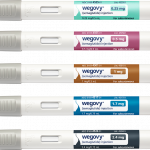
School lunches will soon contain less added sugars and salt under new nutrition standards announced by the U.S. Department of Agriculture on Wednesday. “We all share the goal of helping children reach their full potential,” Agriculture Secretary Tom Vilsack said in a news release announcing the changes. “Like teachers, classrooms, books and computers, nutritious school meals are an essential part of the school environment, and when we raise the bar for school meals, it empowers our kids to achieve greater success inside and outside of the classroom.” The new standards will be implemented over the next few years, the USDA added. Schools serve breakfasts and lunches to nearly 30 million children every school day. These meals are the main source of nutrition for more than half of these children, according to the USDA. The changes announced Wednesday are the first significant reform of school meal standards since the passage of the 2010 Healthy, Hunger-Free Kids Act. The Biden administration has also created a national strategy to end hunger and reduce diet-related disease by 2030. History suggests the moves will work: A 2023 study found the changes that took place during the Obama administration to push more fruits, vegetables, whole grains and low-fat dairy products significantly decreased kids’ and teens’ body mass index. Current dietary guidelines recommend limiting added sugars to less than 10% of daily calorie intake,… read on > read on >


















